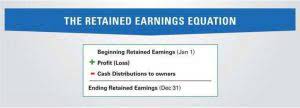+86-(0)768-6925905
Content

For some businesses, startup costs can end up being more than expected, or they weren’t appropriately budgeted for before expansion. However, in other situations, cash inflow will increase in the short-term if a business receives a loan and will decrease as the business pays it back. If there is not enough cash inflow during the repayment period to cover payments and other business outlays, that is a problem. However, the company pulls in an unexpected new account that has a very large spend. This is great news, but now they must cover the high media costs upfront, which disrupts their cash flow.
This can be done by sending invoices as soon as the work or product is completed, and then following up with reminders or statements. Additionally, offering multiple payment options such as online, credit card, or direct deposit, and accepting partial or advance payments, are also beneficial. Furthermore, it is important to set clear and reasonable payment terms such as due dates, late fees, or discounts for early payments. Moreover, staying in contact with your customers on a regular basis and building rapport and trust can also help.
What is cash flow?
Sometimes businesses experience hard times and do not make any profit at all. They make a loss, which is when over a period of time costs of production are greater than revenues. Unfortunately, although customers were satisfied with the quality of wipes, their high price resulted in higher costs for the company. After several months, the costs turned out to be so high that they outweighed the revenues of the company. Because of the quick and misguided decision, Company B experienced problems with cash flow.
Not issuing or chasing up invoices in a timely fashion can result in reduced cash flow. Being aware of common cash flow shortfalls is one of the best ways to avoid them completely. In this article, I reveal 8 common causes of cash flow shortfalls – and how to avoid them. If you need to find quick and proven solutions to increase your liquidity, check out our article on improving your cash flow to get started.
More explanations about Financial Performance
By forecasting your cash flow, you can anticipate any shortfalls or surpluses and plan accordingly. Cash flows can be analyzed using the cash flow statement, a standard financial statement that reports on a company’s sources and usage of cash over a specified time period. Corporate management, analysts, and investors are able to use it to determine how well a company can earn cash to pay its debts and manage its operating expenses. The cash flow statement is one of the most important financial statements issued by a company, along with the balance sheet and income statement. Sometimes you have a good business cash flow management and think you have picked the right customers to trade with, but you can’t avoid cash flow problems, it’s just the way things work.
As you make more money, you also have to spend more money to run your business. Your overhead could increase because you’re outsourcing more, you need to hire more employees, you have to upgrade tech tools to higher plans, or you need to invest in more inventory upfront. Just because you’ve received a payment doesn’t mean you have access to that money. With electronic payment processing, there’s often a delay between the time the payment was made and the moment the cash is accessible in your account(s).
Not enough cash buffer on hand
If you’re experiencing cash flow problems, your business might slow down. Planning for cash flow problems can empower you to cushion—or even avoid—financial blows to your business. Invoices must be processed at least five days before the end of each month.
- However, it had a lot of cash outflow, as it was regularly carrying costs related to transport, accommodation, etc.
- Businesses take in money from sales as revenues and spend money on expenses.
- Note that a cash flow problem is not necessarily the same as experiencing a cash outflow.
- For example, $368 million in net receivables are deducted from operating income.
- Your bank may also require you to put up more collateral or security when you want to borrow.
Although making a loss does not necessarily have to mean that a business’s cash flow is negative, it typically leads to running out of cash. The business is still spending money to operate, but it isn’t earning enough money to cover its expenses. Although it seems to be something that can be avoided, https://www.bookstime.com/ in many businesses are simply caused by poor management. This is because sometimes managers are simply unaware of the importance of cash flow management and thus do not plan it carefully. Building up a cash reserve can be difficult, but it’s worth persevering with. It’s one of the best ways to protect your business from shutting down and other serious problems related to poor cash flow management.
Too much inventory
By following these strategies and practicing good cash flow management habits, you can ensure the financial health and success of your business. If your outgoing expenses https://www.bookstime.com/articles/cash-flow-problems outweigh your incoming sales, it’s time to reexamine your day-to-day business expenses. Some overhead costs are unavoidable, such as utility bills and rent.
- It is essential for assessing a company’s liquidity, flexibility, and overall financial performance.
- Profit, on the other hand, is specifically used to measure a company’s financial success or how much money it makes overall.
- A cash flow budget is an estimate of cash you expect to receive and cash flow you expect to pay during a period of time.
- Businesses that sell their products to other businesses may like to have a lot of inventory on hand to ensure they’re able to accommodate orders of all sizes.
- The first step toward a healthy cash flow is taking a look at the numbers, so start with an analysis.
- Rarely do you find an industry, market, or corporation that performs on a steady, predictable basis; the most consistent element of any business trend is its inconsistency.
- Inventory management is a fine balancing act – not enough inventory and you run the risk of being unable to fulfill customer orders but too much and you are inefficiently deploying capital.
Doing so can be beneficial for both business owners and their customers. It provides customers with added convenience, while ensuring that business owners can avoid volatile exchange rates and markets and still receive the total amount owed. Make sure this is all included in the payment terms and contracting before you kick off any work.
Understanding Cash Flow
However, solving your cash flow issues doesn’t have to be complicated. You’re on the right track if you take the necessary precautions and remain educated on your specific cash flow needs. Keep the above-mentioned cash flow problems and their solutions in mind to help you avoid and mitigate such issues for your enterprise.
What are common problems with cash flow forecasts?
Unforeseen Factors. Cash flow forecast can be affected by external factors being experienced by the company, skewing the forecast. A significant increase in competition or excessive government regulation can quickly change expected cash flows. Another unforeseen factor could be changes in technology.
Below, let’s look at how you can be proactive in maintaining healthy cash flow for your small business. Pricing can be an art, but it still starts with knowing your numbers. Your profit margin is an important metric to know when analyzing prices. Your profit margin will tell you how much money your company makes from the money it earns. This means that you only have to pay interest to the bank for the amount of time you actually need the cash. Let’s look at seven cash flow problems and how small businesses can work to solve them.
If your business is struggling for cash flow, learn the nine tips experts recommend for survival.
Any company manufacturing a physical good knows the importance of effective warehouse management. As inventories grow, the floorspace, technology, and personnel needed to handle these products also develop. Keeping too much inventory in stock can artificially inflate your distribution costs and begin to tie up more of your cash reserve than necessary. Restructure your payments to your vendors to create a more balanced income for your business. If you are unable to restructure payment dates, consider restructuring payment costs. You can do this by meeting with new vendors that can potentially provide inventory and supplies at a better cost.

Recently, customers have been complaining about the poor quality of wipes making trails on the car window. Without any research, they made a contract with a supplier offering more expensive wipes of the best quality on the market. Negative values are marked with parentheses in the cash flow statement.
Reducing DSO can improve cash flow, shorten your cash conversion cycle and boost your bottom line. Discover expert insights on working capital, cash flow optimization, supply chain management and more. Try to negotiate for more favorable payment terms with your vendors. Whatever actions you pursue, ideally, you’ll want to have sufficient reserves to cover roughly six months’ worth of expenses. If you spend time monitoring business trends — collectively or within your organization — you’ll quickly notice that operations tend to be cyclical. Rarely do you find an industry, market, or corporation that performs on a steady, predictable basis; the most consistent element of any business trend is its inconsistency.

If left unresolved, they can affect your ability to pay your bills, invest in your growth, or even stay in business. Fortunately, there are some strategies you can use to avoid or overcome common cash flow problems and keep your budget on track. For example, if the item or service is not appropriately priced to account for all related expenses — along with a profit margin — you could be losing money. Admittedly, some businesses will take a hit on a small ticket or baseline offerings with an eye on recouping these losses with later, large ticket or add-on purchases.
